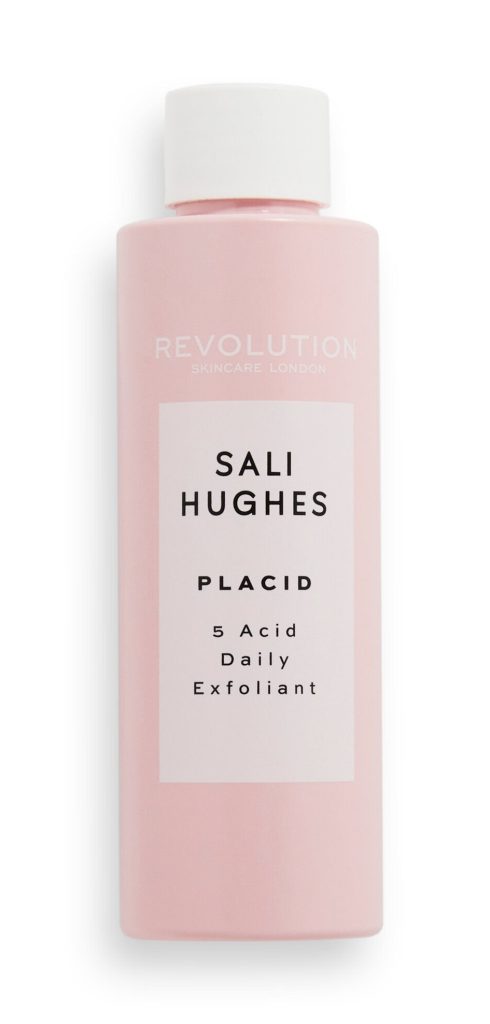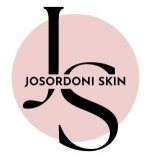
Why exfoliate at all?
It’s far too easy to think that exfoliation is for the young oily skin, cleaning out pores and preventing blackheads. And, of course, it is, but it’s for all ages.
With the top strateum cornea layer of the skin getting thicker than the underlying dermis as we age (sorry about the medical names, it’s easier for us all in the long run, and I’ve gone over them on the Skin Barrier page), it can take too long for the dead cells to slough off, and a bit of help is needed to move them along and resurface the skin, allowing healthier new cells come to the surface.
When should we exfoliate?
There are no right or wrong times to exfoliate, so long as you don’t overdo it. In theory, the gentler acids can be used everyday, but if you have any sensitivity it’s far too easy to ruin your skin with excess exfoliation. Less is definitely more.
My personal preference is to exfoliate twice a week maximum, if my skin isn’t feeling sensitive. If my rosacea is flaring, or my skin feels red and sore, I leave exfoliation out completely, as it will only make my skin worse – the same goes if you have any cuts or sore patches: don’t exfoliate. Otherwise, I use a chemical exfoliation at night, straight after cleansing. But you can use it in the morning if you prefer, just be careful to add a full spectrum sunscreen (yes, I know we should be wearing one anyway, but it’s even more important after exfoliation).
What kind of exfoliator?
There are three types of exfoliator.
: Physical
: Chemical
: Retinols
Physical exfoliators
For an older skin, with the exception of very gentle physical exfoliation using your face flannel when you remove your cleanser, I think physical exfoliation is too harsh and chemical exfoliation is the way to go. Skin gets dramatically thinner as we get older, and physical exfoliation is easy to overdo and break up the skin barrier, letting inflammation and sensitivity take root.
However, if you don’t like the idea of chemical acids on your skin, you can use mechanical tools (face brushes, sponges and face cloths) and topical scrubs. Just remember: be gentle.
In my opinion, harsher scrubs that contain abrasive particles should be left to the resilient young, and we should be thinking of the gentlest of the physical exfoliators: the towelling or muslin face cloth. Use very gently, in light circles. Don’t scrub: it’s far too easy to go in too harshly and take too many layers away. Instead take your time, polishing your skin like a precious silver teapot instead of grinding away as if it were the bottom of a saucepan.
Chemical exfoliators
These include a variety of acids, in different levels of penetration, so be careful not to choose one that is too harsh for your skin. I suggest starting with the gentlest, and then moving up if you think your skin can take it.
Chemical exfoliants are usually applied using a cotton pad, swept across the skin and then left on for the chemicals to work. Leave them on for at least thirty minutes to work, then you can wash them off if you wish. They are likely to tingle slightly, but they shouldn’t burn. If you get a strong hot feeling on the skin, wash off immediately, and apply a moisturiser immediately to adjust the pH of your skin back to it’s normal 4-5.
PHA: Poly-hydroxy acid:
The new kids on the block, these are some of the least aggressive of the acids, though harder to track down. I’ve found them mostly in Korean skincare, and I haven’t got to try them yet, but I find them interesting. I’ll report back when I try one.
Gluconolactone acid: this can help neutralize free radicals, making it perfect for winter as it retains moisture and protects.
Lactobionic acid: For large pores and pigmentation, this can provide clarifying, plumping, and smoothing effects while also increasing hydration in the skin. With regular use, it can improve skin elasticity, thickness, and fade dark marks and scars.
Maltobionic acid: The largest molecules, which makes it penetrate the least, and is gentle and suited to super-sensitive skin. A very good place to start using acids.
AHA: Alpha-hydroxy acid:
Primarily, these acids will act on mild hyperpigmentation like age spots, melasma, and scars, visible pores, fine lines and surface wrinkles and uneven skin tone. Water based, often derived from fruit sugars, they act on the dead skin flakes on the surface of our skin, breaking down the bonds and allowing the dead skin to slough away. This action also works well on pores, taking off any top layer of dead skin around the pore, making them appear smaller and more shallow.
They vary in intensity: working from mildest to most penetrating, you should look for products containing:
Mandelic acid: derived from almonds, so if you have a nut allergy, it might be sensible to avoid this one. But it has larger molecules so doesn’t penetrate the skin very much, working mainly on the outer layer. This means it is the most gentle of these three AHAs.
Lactic acid: As you can imagine, this is dairy derived, so again, check your labels if you are dairy intolerant. Smaller molecules than Mandelic, but larger than glycolic, it is also is a great hydrating ingredient, attracting water to the skin cells.
Glycolic acid: derived from sugar, and has the smallest molecules of the three, which makes it by far the strongest and most likely to cause redness and irritation. If you are new to AHAs, and have no allergies, start with one of the gentler acids and move up to this one.
Also found are citric, malic and tartaric acids, though rarely in isolation. Glycolic acid is the most commonly found, but there are some excellent exfoliants now containing mainly lactic acid, which is much more gentle, and the one I currently prefer. Mandelic acid is coming to the fore now (at time of writing in May 2022) and I’ll be keeping my eye out for those.
I’m currently using:

Sali Hughes at Revolution Placid 5-Acid Daily Exfoliator.
BHA: Beta-hydroxy acid:
BHAs are oil soluble and are recommended for oily skins and acne. Because the acid is oil soluble, it works deep in the pore, seeking out and balancing the sebum, and removing any sebum plugs in the pore. By far the most common BHA is salycilic acid, the acid found in the old style Clearasil type toners. If you have adult acne or very oily skin, this may be the right exfoliator for you. (If you have serious acne, I would suggest checking with a doctor or dermatologist and taking their advice. There are excellent prescription only remedies now that you can use to remedy and keep acne in check.)
Enzymes:
These sit in between the physical and chemical exfoliants and usually are based on pineapple or papaya. The enzymes in these fruits eats at the protein in the skin cells, revealing fresh new skin. Be really careful, follow the instructions carefully, and I would not recommend substituting home made enzyme masks as it is very easy to end with red, inflamed skin.
Retinols:
I am not going to talk about Retinols right now as I don’t use them, so can’t give any advice or observations. If I decide to use retinols at some time in the future, I’ll amend the page to include them.
If you have any personal observations on exfoliation and how it’s suited your skin, that you think might help other people, do add them in the comments box below. I’ll be fascinated to read your thoughts.
Please note: This site reflects my personal opinions and should not be taken as professional advice. Please consult a skin professional if you have any major concerns.

